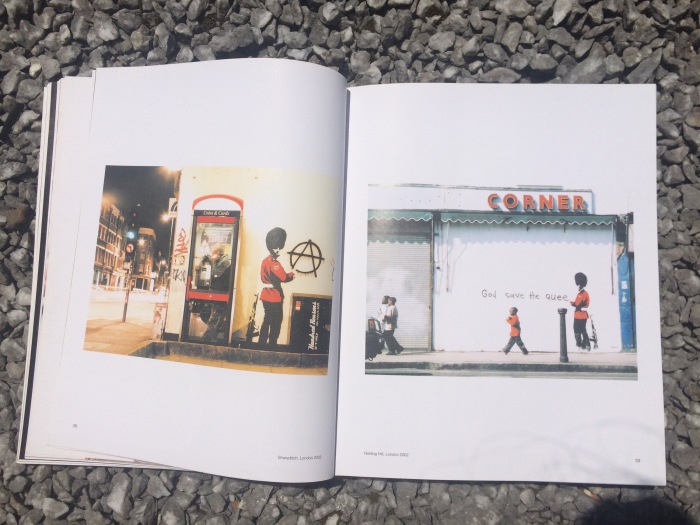Towards the end of last year, I discovered an artist named Banksy. Prior to this finding, I had a very strict view of graffiti: You don’t vandalize things. Period. Looking back on that idea and the struggle to accept that I actually liked the work of a street artist, I feel slightly ridiculous.
How is art on public property forbidden? Isn’t public property by definition public and thus free to be used by whoever wants. Graffiti harms no one and it is simply a way of brightening our everyday life. Why do we obsess over graffiti when we could be working on stopping wars?
Essentially, I do not believe that any art should be illegal, no matter the conventional beliefs of streets having to be gray and boring – God forbid we are surrounded by beauty on our way to work.
Whatever your opinion on this paticular subject may be, I am quite sur it is hard to not enjoy the memoir of England’s most known street artist, “Wall and Piece”. Next to the obvious talent shown, the irony, variety and political statement makes the book both interesting and humourous to read/look at. Eye-opening, informative and at some points plainly fascinating, the book gives its reader or observer a look into the secretive art we aren’t supposed to talk about. Banksy shows wall art, oil canvases painted over, live animals sprayed on and some sarcastic creations. Banksy’s vicious style keeps the book from becoming boring or too much and leaves you smiling and humoured, appreciating every work from the beginning to the end, slightly in awe from everything he’s managed to do.
Some people become cops because they want to make the world a better place. Some people become vandals because they want to make the world a better looking place.
Available here

There is no denying the talent of many street artists. There is also no denying the value of unconventional and, as is often the case with street art, unexpected art styles. I think the problem a lot of people have with the ‘average’ graffiti, though, is that the artists involved show little respect for the art that already exists in the architecture of the buildings they paint on. If I design and build something, I won’t appreciate someone coming along and modifying my work without my permission: rather than appreciate the work and talent of the street artist involved, my reaction would be negative.
This is why I’m a proponent of buildings that are specifically dedicated for street art. That way, artists can create without having their works modified by others without their consent. It’s a win-win situation, and would include scenarios where a street artist feels that a neighborhood has become too drab, and approaches building owners for their permission to have their buildings decorated in street style.
LikeLiked by 1 person